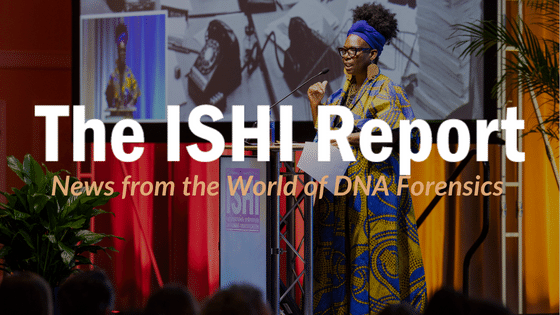Greetings from Madison and welcome to the May edition of the ISHI Report. This issue is filled with contributions from many familiar names in the forensic science community. Read on to learn more about several topics that will be explored in depth during the workshops at ISHI.
Jo-Anne Bright from the New Zealand Institute of Forensic Science and Research (ESR) reflects on what’s been learned ten years on from the introduction on STRmix™. Exciting new features have been incorporated into the system based on feedback from users and advances in the underlying science. These include two related products which, when combined with STRmix™, complete a full workflow from analysis to interpretation and database matching. If you can’t get enough of probabilistic genotyping, consider signing up for the Advanced Reporting of Likelihood Ratios workshop at ISHI taught by Jo and colleagues.
Communicating clearly is a valuable skill no matter what your career. Presenting scientific concepts and results is especially important for those called to testify in court. Former forensic scientist Julie Burrill will be co-presenting a workshop at ISHI designed to help forensic professionals learn a practical method based on improvisational skills to convey scientific information to disparate audiences. She shares how the Alda method can help forensic scientists effectively communicate to a non-scientific audience.
Professor Pamela Marshall from Duquesne University previews what attendees will learn during “The Other NGS, Next Generation Scientists” workshop at ISHI. The pandemic has changed many things, including how young scientists prefer to learn new skills, interact with supervisors and receive feedback. This workshop taught by a diverse team of forensic professionals will offer actionable suggestions to help those in management recruit and retain the next generation of forensic scientists.
We’re pleased to introduce Natalia Yael Sandberg Lacasa, head and co-founder of the “Registro Nacional de Huellas Genéticas” of the Direccion Nacional de Policía Científica (DNPC) of Uruguay. Natalia describes how she decided to dedicate her career to the field of forensic science and shares some of the challenges unique to her region. Learn more about ongoing efforts to advance forensic science in Latin America by attending the GCLAITH Meeting she is chairing at ISHI.
New strides in DNA technologies have made it possible for Suni Edson and colleagues to identify remains of services members lost during conflicts in WWII from common graves in Cabanatuan, Philippines. The identifications were made more challenging due to compromised state of the samples, preservation methods and commingled bones. In this article Edson et. al, detail their efforts to overcome the odds to successfully identify remains.
Our colleague at Promega, AnnaKay Kruger offers helpful perspective in her piece, “Your Public Persona and You- Navigating Social Media as a Forensic Scientist”. Her practical advice is useful to all who are engaged with social media and offers a valuable reminder that what you post on the web can come back to haunt you.
We are excited to announce a new 6 part video series, Innocence After Guilt- The Role of Post-Conviction DNA Testing. This series examines post-conviction DNA testing to learn more about the factors that contribute to wrongful convictions, the years-long process of re-examining a case, the people involved and the roles that they play, and the key learnings that will hopefully lead to fewer wrongful convictions in the future.
Finally, we offer a note of thanks to all the aspiring forensic scientists who applied to be student ambassadors at this year’s 34th International Symposium on Human Identification. We were impressed with your engagement and heartfelt love for the field and wish we could have chosen you all. Follow www.ishinews.com and this publication to learn about the four students chosen as ISHI Student Ambassadors.
We hope that you enjoy reading this edition of the ISHI Report and hope to see you this fall in Denver at ISHI 34. As always, reach out with suggestions for articles or volunteer to contribute to our publication.


